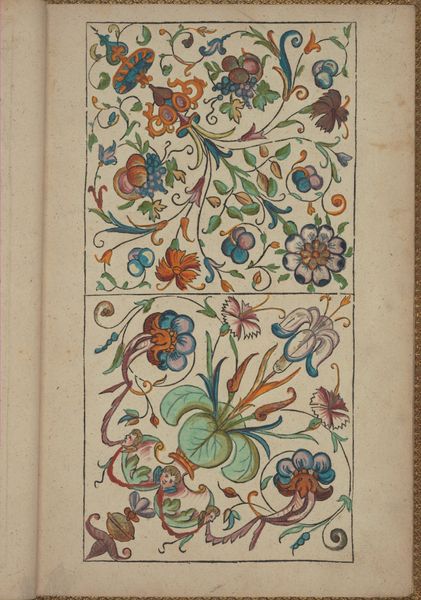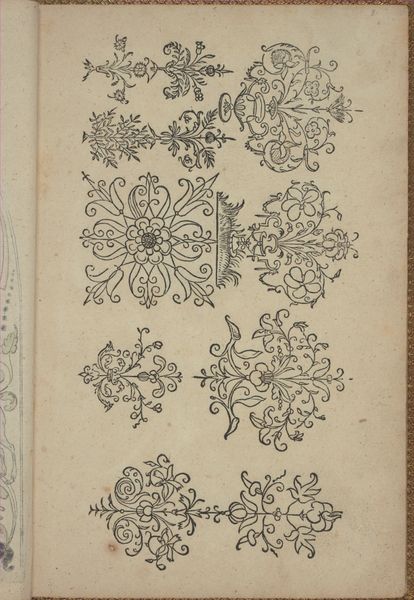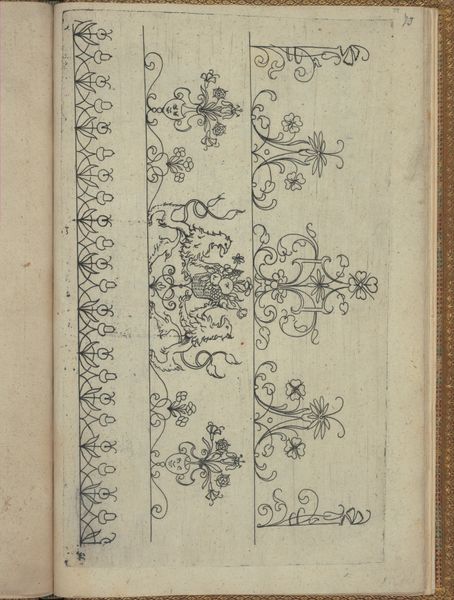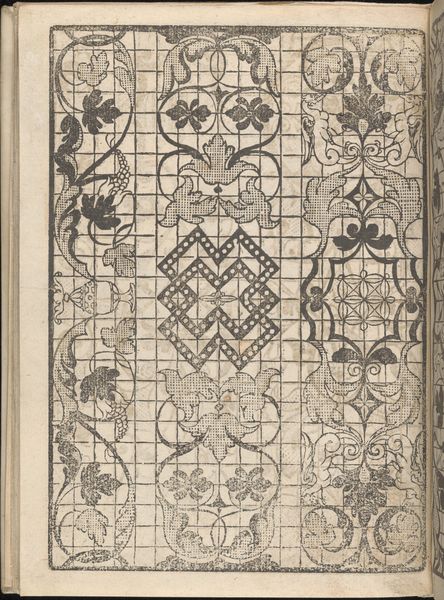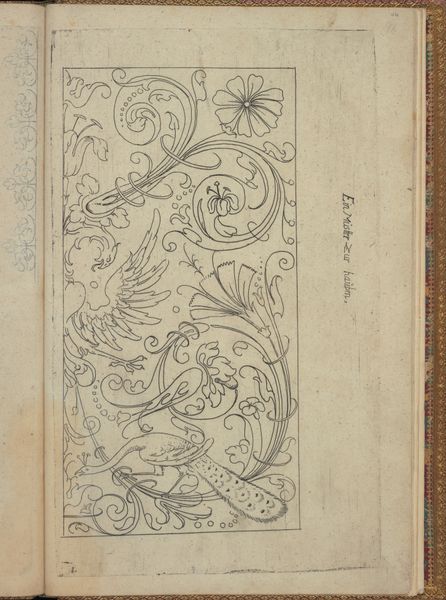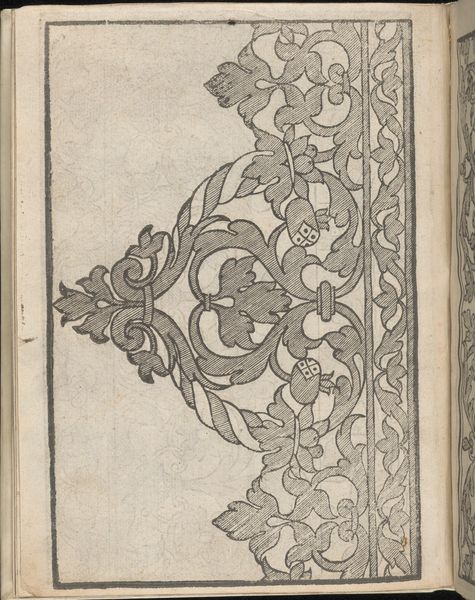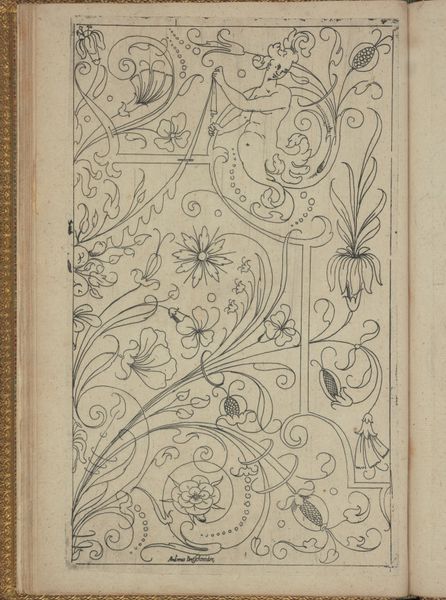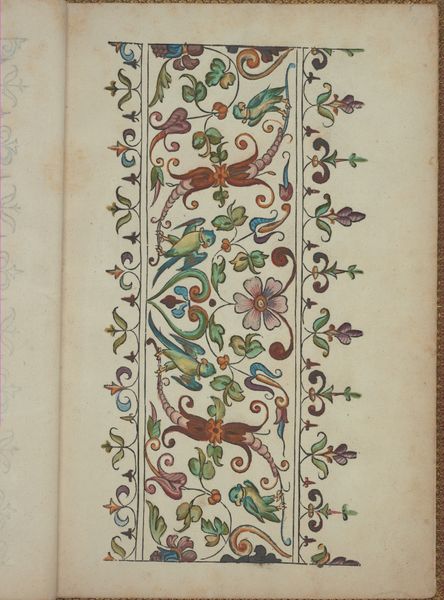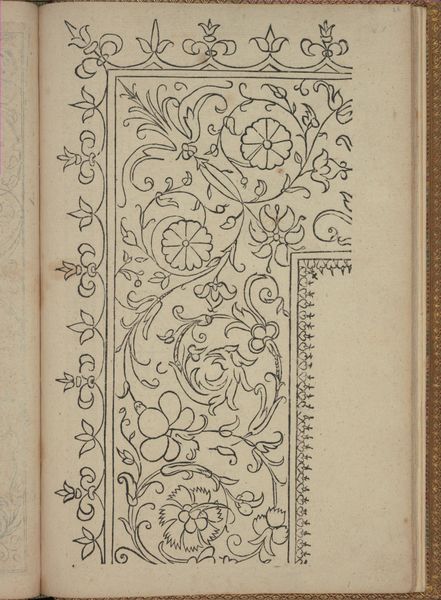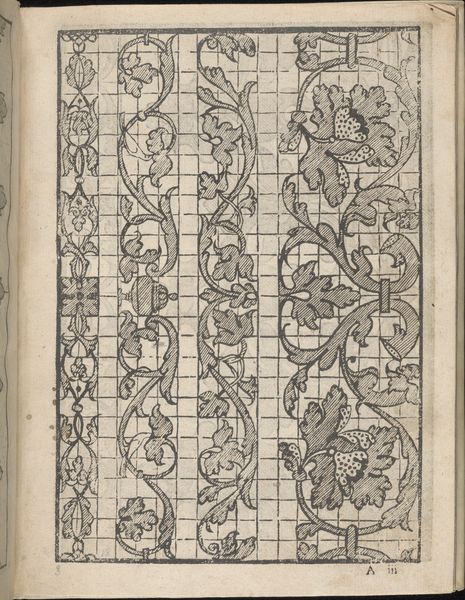
drawing, print, watercolor
#
drawing
#
water colours
# print
#
book
#
11_renaissance
#
watercolor
#
decorative-art
Dimensions: Overall: 12 x 8 1/16 in. (30.5 x 20.5 cm)
Copyright: Public Domain
Curator: This is page 9r from Andreas Bretschneider’s "New Modelbüch," a stunning example of early 17th-century decorative art created around 1615. Editor: Oh, wow. My immediate reaction? It's like stepping into a fantastical, perfectly ordered garden. The symmetry is really striking; makes me wonder what it'd be like to live in a world ruled by that kind of visual harmony. Curator: Precisely! Each of these ornamental motifs, executed in watercolor and print, operates almost as a microcosm, self-contained yet contributing to a larger whole. One sees the interplay between botanical representation and pure abstraction. Note, too, how Bretschneider uses the page layout itself to activate a visual grid, allowing for seriality and difference. Editor: So, less a botanical study, more an exploration of shapes, right? Like, if you strip away the flower-ness, you're still left with these amazing compositions of color and line. What was this used for, though? I mean, did people just, like, frame these pages? Curator: The "Modelbüch," served as a pattern book. Craftsmen, such as embroiderers or metalworkers, would use these designs as inspiration or direct templates for their own creations. Editor: Ah, so it was functional art! A sort of proto-Pinterest board for artisans? Still, it has this quality that elevates it. The meticulous detail and those dreamy watercolors... it feels way more precious than a simple how-to guide. Curator: Its aesthetic value certainly transcends the merely functional. Through techniques like mirroring, careful arrangement of positive and negative spaces, and vibrant coloring, it establishes a refined design vocabulary of its own. Editor: Looking closely, you can see that almost every shape feels considered, almost mathematical, but at the same time… free-flowing? There's tension. I feel like I'm witnessing a very specific kind of mind at work here. A mind that loves rules, but also yearns to bend them a little. Curator: Indeed. Bretschneider elegantly reconciles order and freedom. To return to my initial point, through this tension a novel ornamental vocabulary comes into being—it’s about visual balance that's intellectually, if not physically, weightless. Editor: Thinking about the hands that probably used this, flipping through pages, reimagining these forms for tapestries, or jewelry... It gives you this wonderful sense of connection to the past. These silent images, whispering ideas across centuries. Curator: An elegant sentiment. The Bretschneider piece ultimately stands not merely as a pattern source, but rather as an eloquent reflection upon its era’s complex aesthetics.
Comments
No comments
Be the first to comment and join the conversation on the ultimate creative platform.
